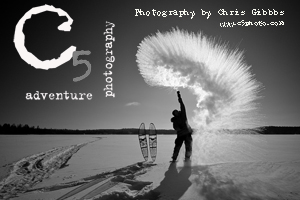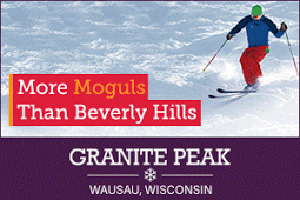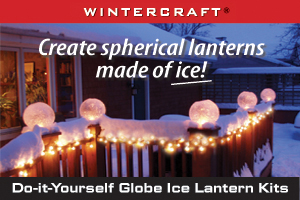Fat Tire Adventure
Minnesota is well-know for being the land of 10,000 lakes. Among those 10,000 lakes are some large bodies of water like Lake Superior, Lake of the Woods, Red Lake, Leech Lake, Lake Winnibigoshish, and Lake Mille Lacs. All these bodies of water are known for their recreational activities, beauty, and size. During winter, these large bodies of water freeze up into large sheets of ice, Lake Superior is the exception to this rule.

Minnesota is also known to be the epicenter of winter fatbike enthusiasts, including myself. Oversized tires has taken over the cycling industry and there are few places the fatbike can’t go. Groomed single-track, snowmobile trails, ski hills, rivers and lakes are fair game, given conditions, its Minnesota. The fatbikes has consumed my winters between racing, riding, and testing the limits of where a bike with 4 inch tires can take you.
Mille Lacs Lake has a surface area slightly more than 200 square miles and is known for its walleye fishing. The longest stretch across the lake is from Isle to Garrison which is approximately 19 miles as a crow flies. It is less than an hour away from where I live and ever since I assembled my first fat tire bike, it has been on the radar as another opportunity to utilize large tires to cross a very large, frozen body of water.
Crossing Mille Lacs during winter is, by far, not a first. Cars, trucks, snowmobiles, four-wheelers, skiers, and even bikers accomplish this task every year. But as a fatbiker and a photographer, this was a lake, close to home, with the potential of epic photos and the opportunity to ride across the second largest inland lake in Minnesota.
I have spent 20 years traveling across Minnesota’s frozen bodies of water. I have pulled toboggans, snowshoed, snowmobiled, skied, biked and walked on ice. To this day, I am still not comfortable when I step onto a frozen lake. When I do, I take all the precautions and use my experience to navigate on a frozen waterway safely. But I always keep in mind that ice is unpredictable. In order to cross Mille Lacs on fatbikes, I had certain conditions in mind to make the ride successful. I wanted to wait until late February or early March to allow a full winter season to make good ice. Temperatures during this time are usually more forgiving and snow and ice has had time to settle making for, hopefully, a harder riding surface. I needed a riding buddy that could leave on short notice, offer good subject matter for photos, and provide another safety precaution, just in case. Add another fatbike enthusiast and a lust for adventure Mike Larson. Now, we just had to wait for that window of opportunity.
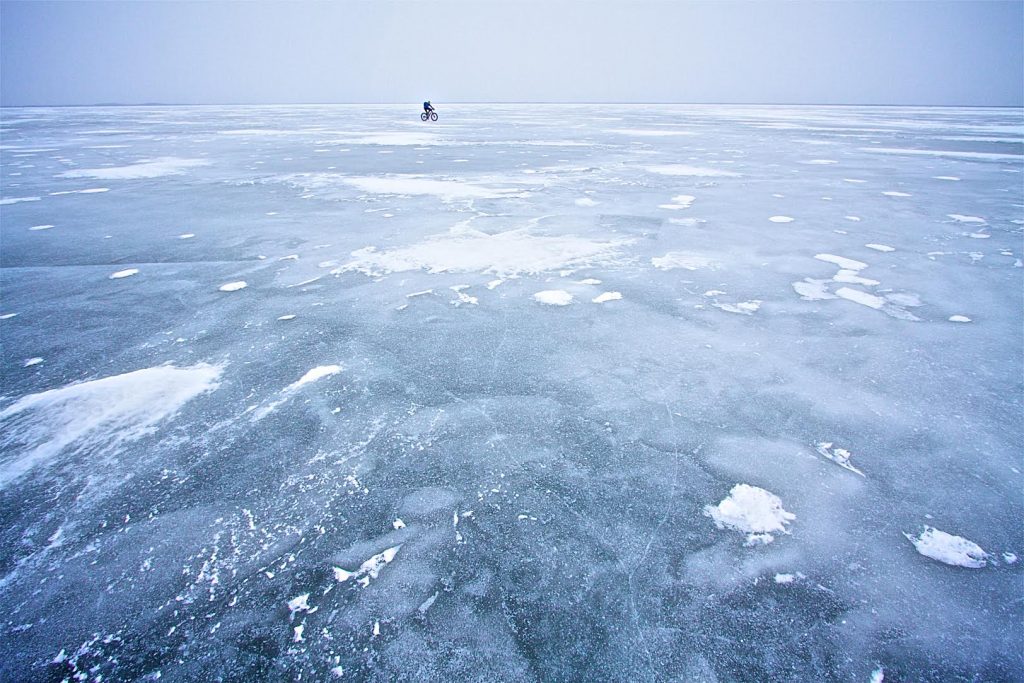

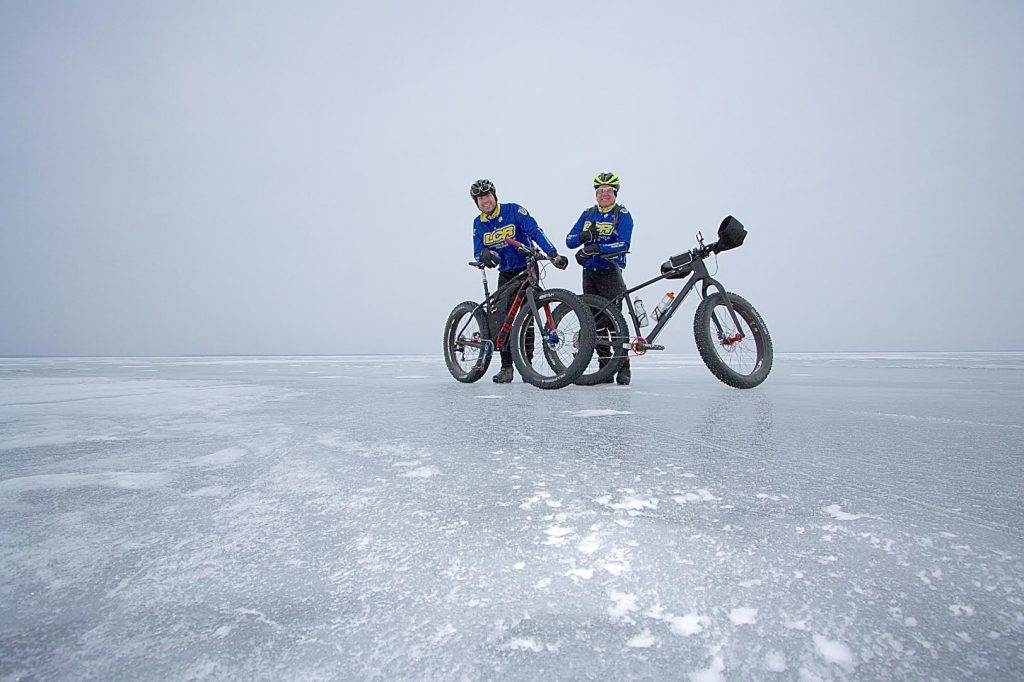
Chris Gibbs
C5 Adventure Photography
www.c5photo.com


